By Alex Trukan
Formations are often the first thing that comes to our mind when talking about tactics. We hear numerous TV commentators introducing a team starting with a formation they play: 4-5-1, 4-3-3, 4-2-3-1. Formation are a big part of the team’s tactics as it is a tool which helps to fulfil team’s style of play, however, it is not the best reflection of it. Especially when attacking, we rarely see players in exact the same positions and shapes throughout the whole game. Modern teams are becoming more flexible, unpredictable and often playing in a very unusual ‘shapes’. That points our attention into considering a shape as something which is not ‘set’, but rather than that, very flexible, with different effects depending on its’ characteristics. For example, we might see a team playing with no players positioned around the opposition’s back line what will then create an overload in midfield and at the back as well as open up opportunities to make unpredictable forward runs. That makes the shape asymmetric and flexible.
One of the first examples of the asymmetric shape is creating overloads on one side of the pitch. That might involve winger staying wide, striker making a movement into wide areas as well as midfielder supporting them. By doing that, three players will be positioned within 5-10 yards from each other, what will create an opportunity to combine play as well as drag opposition players in to mark them. It can also help to isolate winger/full back on the opposite side.
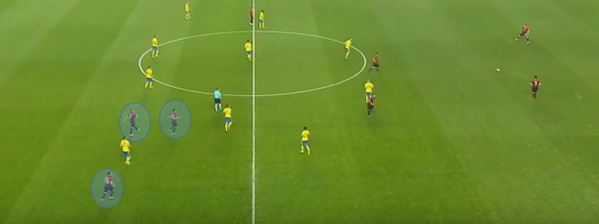
On the other hand, a team might choose to leave no players on the opposite side to where the ball is. That makes it possible to play through the opposition as they will retain a certain level of width, no matter how narrow the attacking team is playing. This type of shape encourages to play forwards rather than recycle play and switch sides.
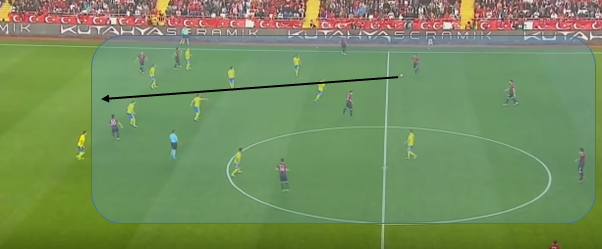
Another example might be when a team creates an overload on their own half, leaving a lone striker on the opposite side. That enables them to have controlled possession during build up play, gives them defensive security as well as invites the opposition to press what will open up possibilities to play forwards (into the striker) quickly.
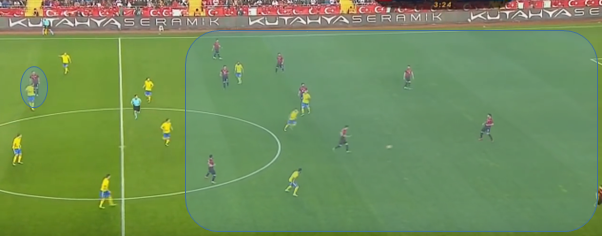
In this type of situation, wingers might come towards central areas to create additional option when trying to play forwards through the opposition defensive block. As we can see below, striker is the player that stays high to create a degree of attacking depth and stretch the opposition shape.
[wpsharely id="2988"][/wpsharely]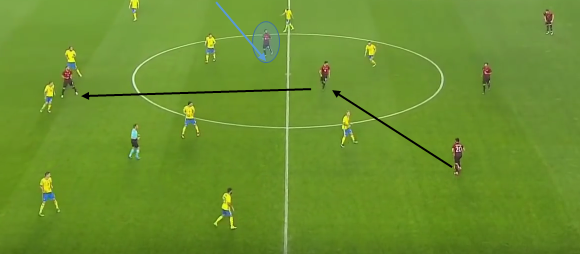
Narrowness in the attacking shape can not only be applied in terms of width, but also in length. Positioning players only within the middle third leaves enough width to recycle the play but also provides opportunities to play into space behind the opposition’s back line. It also potentially stretches the width of the defending team’s shape what helps to break through them.
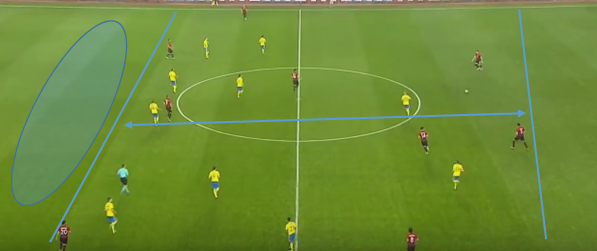
As coaches who design our team’s style of play, it would help to be aware of how does different shapes affect the attacking opportunities. It is, therefore, important to be open minded and not restricted by only looking at formations. That will help us to create our own identity and come up with new tactics and strategies.
By Alex Trukan, Development Coach, Nottingham Forest
@AlexTrukan


